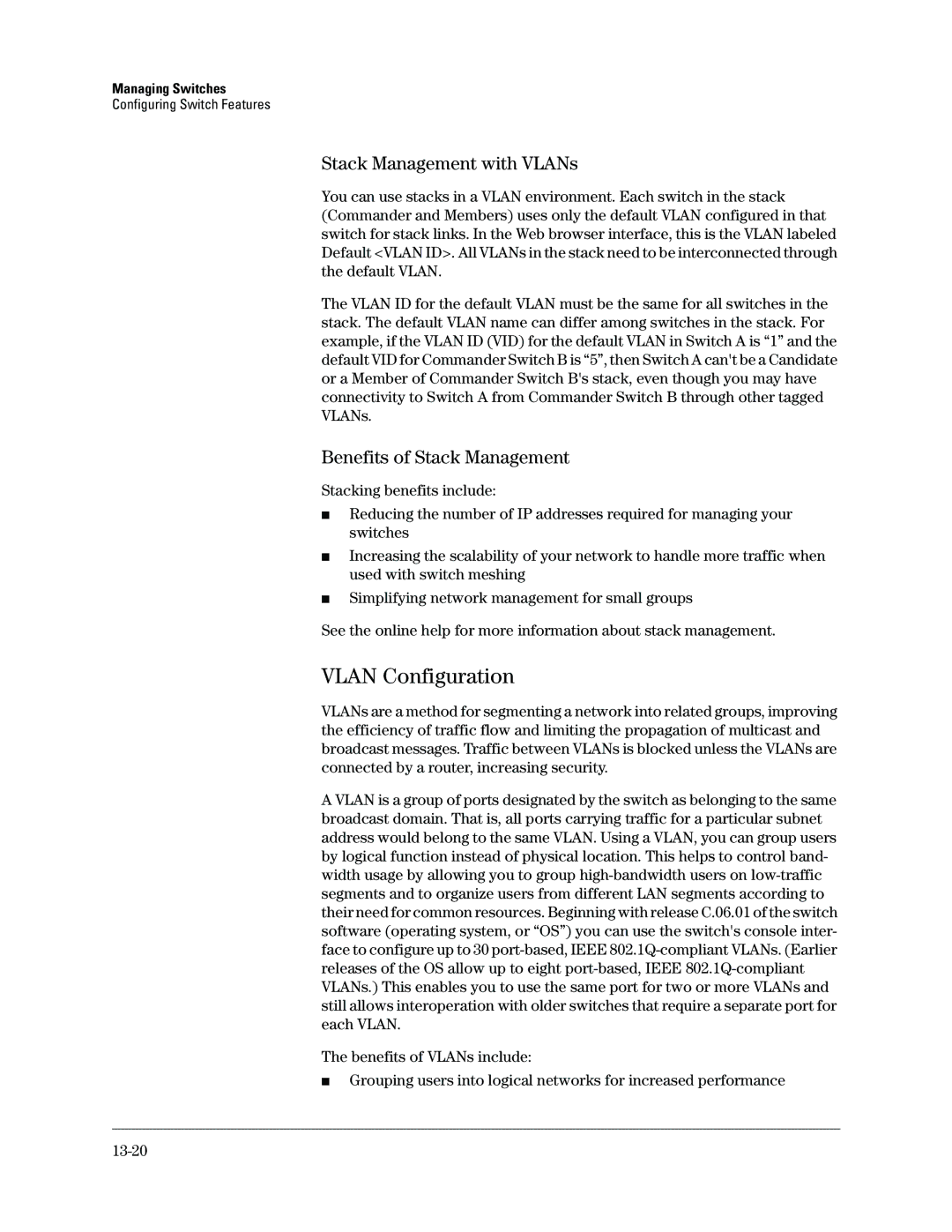Managing Switches
Configuring Switch Features
Stack Management with VLANs
You can use stacks in a VLAN environment. Each switch in the stack (Commander and Members) uses only the default VLAN configured in that switch for stack links. In the Web browser interface, this is the VLAN labeled Default <VLAN ID>. All VLANs in the stack need to be interconnected through the default VLAN.
The VLAN ID for the default VLAN must be the same for all switches in the stack. The default VLAN name can differ among switches in the stack. For example, if the VLAN ID (VID) for the default VLAN in Switch A is “1” and the default VID for Commander Switch B is “5”, then Switch A can't be a Candidate or a Member of Commander Switch B's stack, even though you may have connectivity to Switch A from Commander Switch B through other tagged VLANs.
Benefits of Stack Management
Stacking benefits include:
■Reducing the number of IP addresses required for managing your switches
■Increasing the scalability of your network to handle more traffic when used with switch meshing
■Simplifying network management for small groups
See the online help for more information about stack management.
VLAN Configuration
VLANs are a method for segmenting a network into related groups, improving the efficiency of traffic flow and limiting the propagation of multicast and broadcast messages. Traffic between VLANs is blocked unless the VLANs are connected by a router, increasing security.
A VLAN is a group of ports designated by the switch as belonging to the same broadcast domain. That is, all ports carrying traffic for a particular subnet address would belong to the same VLAN. Using a VLAN, you can group users by logical function instead of physical location. This helps to control band- width usage by allowing you to group
The benefits of VLANs include:
■Grouping users into logical networks for increased performance
